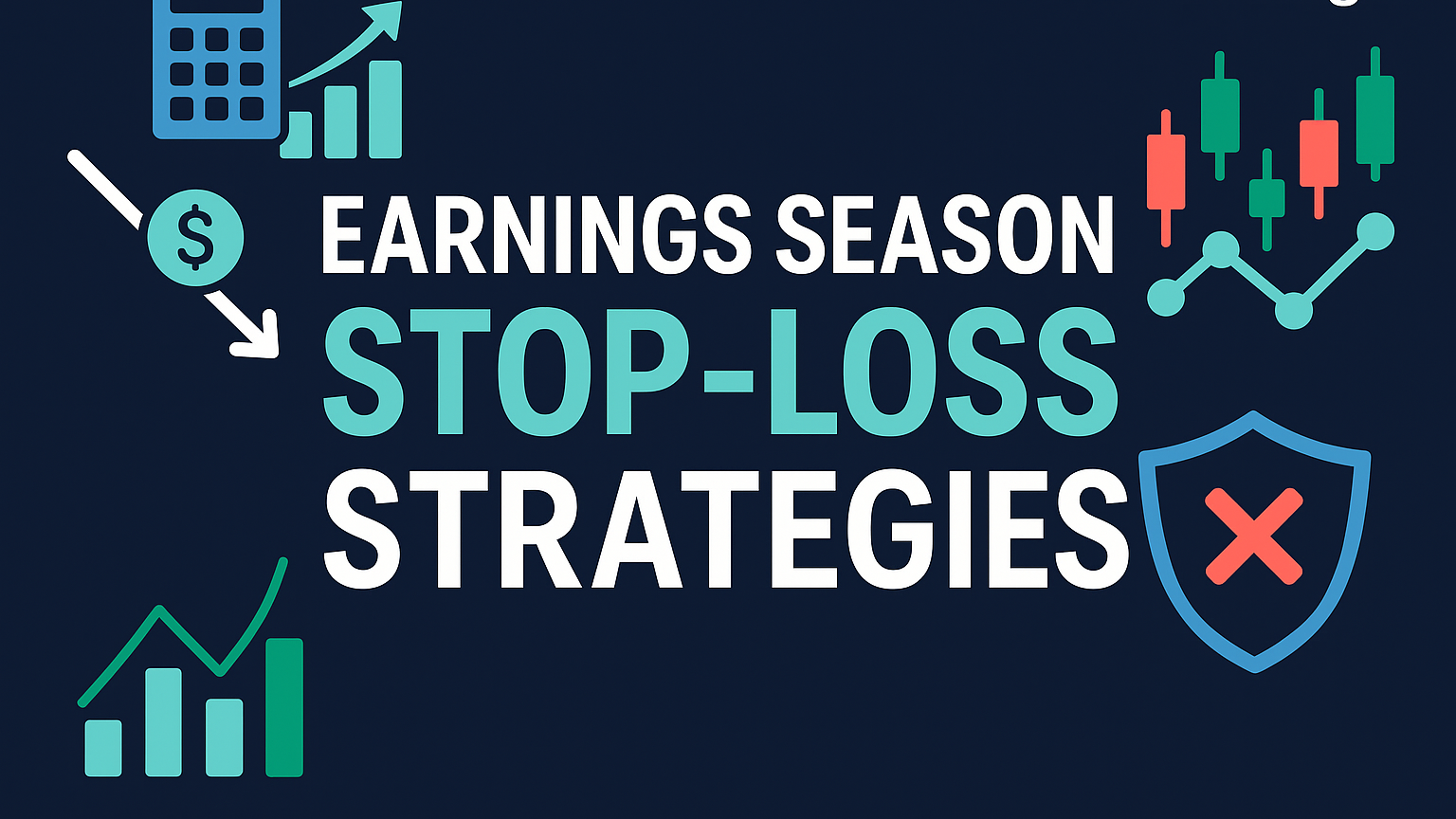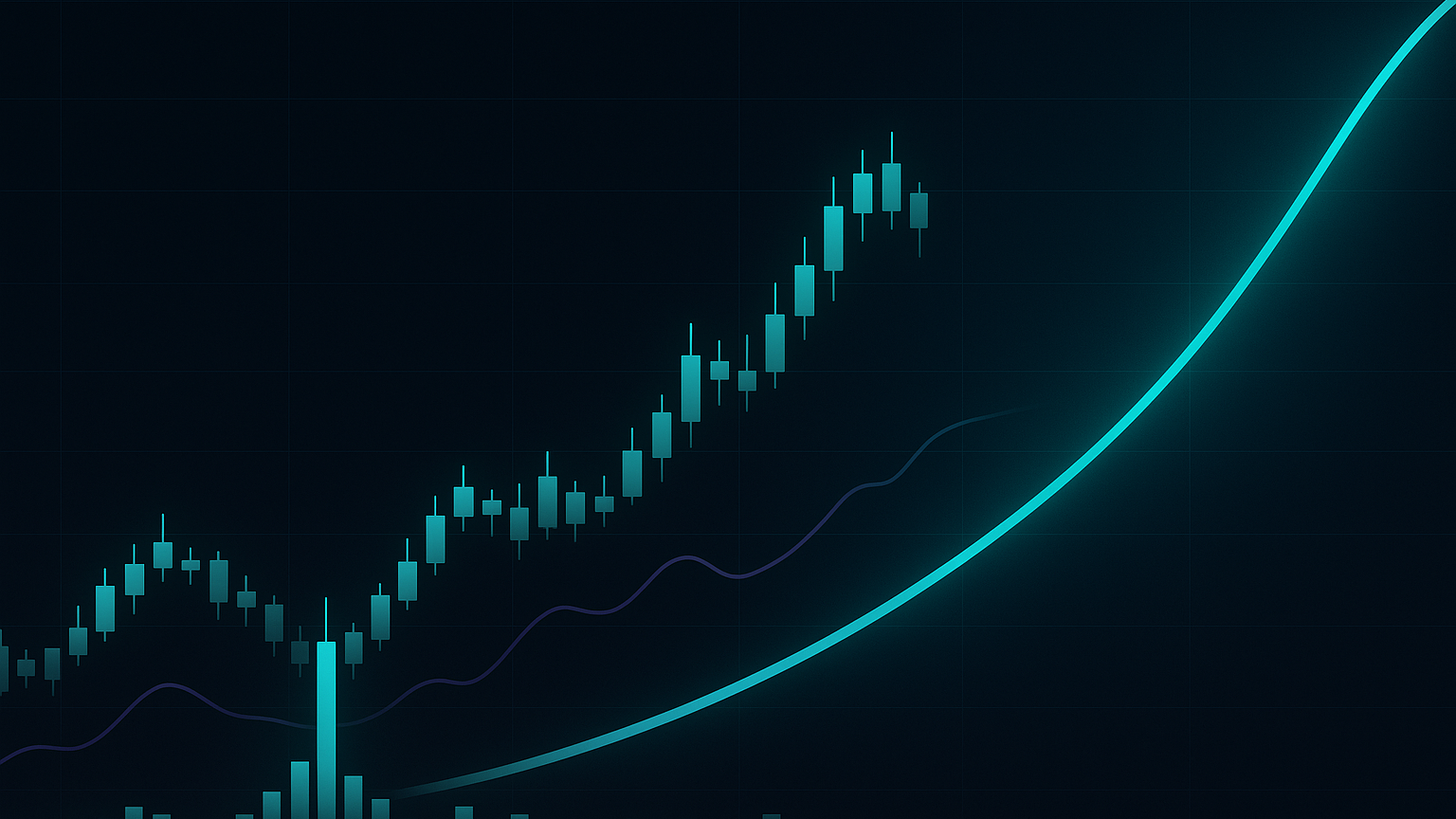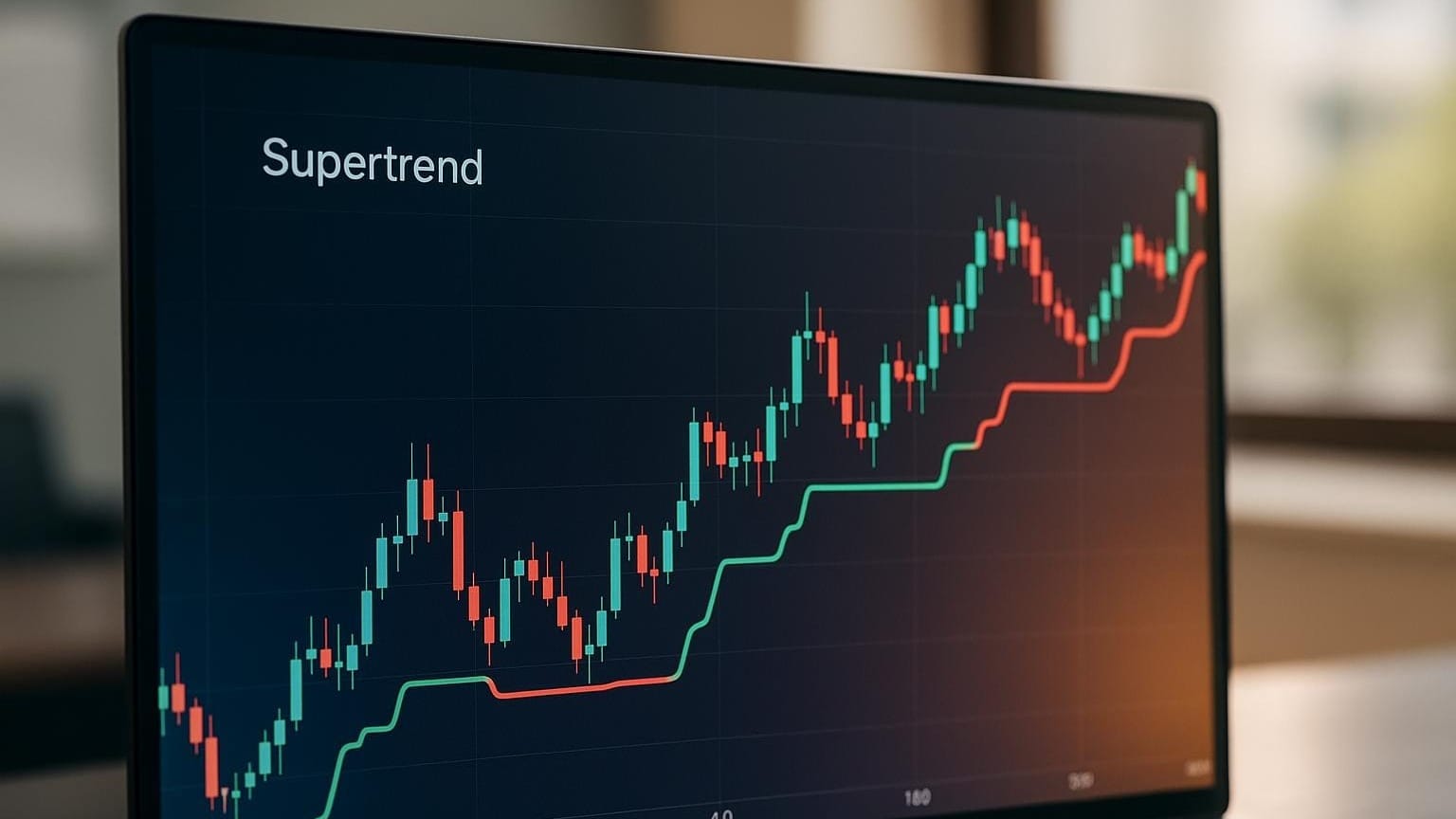Flexibility is essential for traders to adapt to market changes, manage risks, and improve decision-making amid volatility.
Markets are unpredictable. Prices swing, trends shift, and unexpected events create opportunities and risks. To succeed, traders need to adjust quickly, control emotions, and use tools that respond to changing conditions.
Here’s what sets successful traders apart:
- They monitor market changes in real-time using tools like RSI, MACD, and VIX.
- They plan for different scenarios, including volatility, by adjusting position sizes and strategies.
- They build flexible trading plans with dynamic entry/exit rules and strong risk management techniques.
- They leverage advanced tools like AI Backtesting for faster, smarter decision-making.
- They continuously review performance and learn from mistakes.
The key takeaway? Stay prepared, stay calm, and stay informed to navigate the ever-changing trading landscape.
Improve Your Trading Results by Being a More Flexible Trader — Steve Ward
How to Recognize and Respond to Market Events
Spotting market shifts early can make all the difference between seizing opportunities or being blindsided. The secret lies in combining real-time monitoring with a well-thought-out plan. This dual approach helps you act quickly and adjust your strategy as markets evolve. By identifying changes early, you lay the groundwork for strategic planning that strengthens your ability to navigate dynamic markets.
Spotting Market Changes in Real Time
To detect market shifts, rely on a mix of technical tools designed to provide timely insights. For example, volume indicators can reveal whether institutional investors are driving price movements. A surge in volume alongside price changes often signals something significant. Tools like the On-Balance Volume (OBV) and the Accumulation/Distribution Line are particularly useful for tracking positive and negative volume flow.
Momentum indicators are another essential tool. The Relative Strength Index (RSI) is a classic example: readings above 70 point to overbought conditions, while those below 30 suggest oversold territory. Seasoned traders often wait for the RSI to rise above 70 and then dip back below before selling — or fall under 30 and then climb back up before buying.
The Moving Average Convergence Divergence (MACD) is invaluable for gauging trend direction and momentum. If price highs diverge from the MACD, it may signal a weakening trend and potential reversal. Similarly, the Average Directional Index (ADX) measures the strength of a trend: readings above 40 indicate a strong trend, while those below 20 suggest a weak or nonexistent trend. Traders often use the ADX to decide whether to follow a trend or switch to range-trading strategies.
The Aroon oscillator focuses on the time elapsed since the highest and lowest prices. When the Aroon up indicator climbs above 70 while the Aroon down remains low, it points to a strong uptrend. Pairing the Aroon oscillator with volume indicators can confirm these trend changes.
For monitoring volatility, the VIX (Volatility Index) is a go-to tool. It reflects the implied volatility of the S&P 500 over the next 30 days. A VIX value above 30 suggests high volatility, while readings under 20 indicate a calmer market. Since the VIX’s long-term average often hovers near 20, any major deviation signals shifting conditions.
Armed with these real-time insights, you can act decisively when market dynamics shift.
Planning for Different Market Scenarios
While real-time tools help you spot changes as they happen, scenario planning prepares you for what might come next. This forward-thinking mindset reduces emotional decision-making and ensures a more systematic response when markets become volatile.
Market volatility often brings both risk and opportunity. Take 2020, for instance: the S&P 500 dropped as much as 34% during the year but ended with a 16% annual return. Traders who planned for sharp declines and recoveries were better equipped to handle these dramatic swings.
When building scenario plans, start by setting clear objectives and shoring up your risk management practices. Revisit strategies like adjusting position sizes, setting stop-loss orders, and defining risk thresholds. During volatile periods, focus on stocks that are trending but haven’t yet accelerated, as these often offer better entry points with favorable risk-to-reward ratios. Stocks in consolidation ranges can also be promising — buying on an upside breakout with stop-loss orders in place can help limit potential losses.
Short-term strategies can be particularly effective in turbulent markets. For example, setting specific profit targets or using tighter trailing stops allows you to lock in gains before conditions reverse.
For each scenario, outline specific actions you’ll take. This could include maintaining a cash reserve for downturns, using tax-loss harvesting to offset gains, or continuing regular contributions to retirement accounts like a 401(k) even during market stress. Explore non-directional strategies, which can perform well regardless of market direction. Options strategies like strangles or straddles can be effective when you expect large moves.
To refine your strategies, test them under various conditions. Rank potential outcomes based on factors like attainability and profitability. By practicing during calmer periods, you’ll be better prepared to act decisively when volatility strikes.
Building a Flexible Trading Plan
A well-thought-out trading plan acts as your compass in uncertain markets. As Sun Tzu wisely said, “Every battle is won before it is fought” [1]. This section expands on earlier discussions about real-time adjustments and scenario planning, focusing on how to create a structured yet adaptable framework.
The goal is to build a plan that’s disciplined enough to keep you on track but flexible enough to adjust to changing market conditions. This involves setting dynamic rules, implementing strong risk management strategies, and regularly fine-tuning your approach.
Setting Dynamic Entry and Exit Rules
Rigid rules often fail in unpredictable markets. Instead, dynamic rules adapt to factors like market volatility, trend strength, and broader conditions. Context is just as important as the trading signal itself [2]. For instance, a breakout signal during high-volume trading has a different weight compared to the same signal in a low-volume session. Similarly, during earnings season, you might wait for stronger confirmation before entering a trade, knowing that volatility can spike unexpectedly.
Adaptive systems help identify the best trade timing based on market conditions. In sideways markets, a range-trading strategy with tighter profit targets might work best. On the other hand, strong trending markets may call for trend-following strategies with wider stops and larger position sizes.
Your exit strategy should also adapt to the stock’s behavior. For more volatile stocks, using longer-term moving averages can help you avoid premature exits [1]. For example, a stock with wide daily price swings might use a 20-day moving average as a trailing stop, while a steadier stock could rely on a 10-day average. Additionally, avoid placing stop losses too close to the stock’s typical daily range. If a stock moves $2 per day, setting a stop loss just $1 away could lead to unnecessary exits. Fundamental events, like earnings announcements, can also act as natural decision points — either prompting you to exit or to enter with clear risk parameters.
These dynamic rules should always work hand-in-hand with solid risk management to protect your capital.
Using Risk Management Techniques
Risk management is the backbone of successful trading. One key element is position sizing. A common guideline, the 1% rule, suggests risking no more than 1% of your total capital on a single trade [3]. For example, with a $100,000 account, your maximum risk per trade would be $1,000.
Another critical concept is the risk-reward ratio. Aiming for a ratio of at least 1:2 ensures that for every $1 you risk, you’re targeting a $2 gain. This approach can lead to profitability even if your win rate is below 50%.
Here’s a quick look at some risk management techniques:
| Technique | Description | Benefits | Limitations |
|---|---|---|---|
| Stop-Loss Orders | Automatically closes a position at a set price | Limits losses and removes emotional decisions | Can trigger prematurely due to normal fluctuations |
| Position Sizing | Allocates a specific amount of capital per trade | Controls risk and maximizes opportunities | Requires precise calculations based on account size and risk tolerance |
| Diversification | Spreads investments across assets or sectors | Reduces the impact of single losses | May limit gains if one asset outperforms |
| Hedging | Offsets risk by taking opposing positions | Protects capital during downturns | Can reduce potential gains and be complex to implement |
Diversification is another essential tool. Spreading investments across different asset classes, sectors, or regions helps smooth out returns and minimizes the impact of any single loss [1].
Reviewing and Updating Your Strategies
Markets are constantly changing, and your trading plan should evolve with them. Many new traders face losses because they stick to outdated or overly rigid strategies. Keeping a trading journal can help. Record your entry and exit points, the reasoning behind your decisions, market conditions, and the outcomes. Over time, this will reveal patterns and areas for improvement.
Set aside time for regular reviews — monthly for active traders and quarterly for those with a longer-term approach. These reviews allow you to identify recurring issues, tweak position sizes, or even avoid certain market conditions altogether. A trading plan isn’t meant to be static; it should grow and adapt alongside you, serving as the foundation for long-term success in ever-changing markets.
Using Advanced Trading Tools for Better Flexibility
Advanced trading tools are the perfect companions for a flexible trading plan. While having a solid plan is essential, the real game-changer lies in using the right tools to bring that plan to life. Modern trading platforms are packed with features that help you quickly adapt to market shifts and fine-tune your strategies. By using these tools, you can better navigate the fast-paced world of trading and confidently adjust your approach as needed.
The trick is to select tools that enhance your flexible mindset rather than restrict you with rigid systems. Advanced technical analysis tools, screeners, and AI-powered backtesting platforms work together to create a toolkit that thrives in volatile markets. This combination equips you with the speed and confidence to adapt as conditions change. Let’s dive into some key tools that can help you stay nimble.
Key Technical Analysis Tools for Traders
Modern technical analysis is all about processing vast amounts of data to uncover opportunities and manage risks. These principles apply across various markets, including stocks, forex, commodities, and cryptocurrencies.
Take LuxAlgo’s Price Action Concepts (PAC) toolkit, for example. It automatically detects patterns and highlights volumetric order blocks, giving you insights into potential institutional trading activity. Its advanced market structure analysis helps you assess whether a breakout will hold or reverse — crucial information during times of market volatility.
Another standout is the Signals & Overlays (S&O) toolkit, which combines multiple signal algorithms with customizable visual overlays. For trending markets, tools like MACD and Bollinger Bands might be your go-to indicators. In choppier conditions, oscillators like RSI or the Stochastic Oscillator can help identify overbought or oversold levels.
Then there’s LuxAlgo’s Oscillator Matrix (OSC), which excels at real-time divergence detection and money flow insights. It can alert you to potential reversals before they’re widely recognized, while its trend-following signals keep you aligned with the market’s direction.
What makes these tools particularly effective is how well they work together. Instead of relying on a single indicator, combining multiple tools gives you a broader and more accurate understanding of market conditions. This integrated approach paves the way for rapid strategy validation, which we’ll explore further in the next section.
How Screeners and Backtesters Keep You Agile
Flexibility in trading often boils down to speed, and that’s where screeners and backtesters shine. These tools let you sift through thousands of potential setups and test new strategies without putting real money at risk.
LuxAlgo’s screeners are designed to work seamlessly with its other exclusive tools. They allow you to scan for specific patterns or conditions across multiple assets at once. For example, during periods of high volatility, you can search for stocks showing unusual volume spikes alongside specific candlestick patterns.
Each toolkit also comes with a backtester, enabling you to test your ideas before executing them in live markets. A good rule of thumb is to define your strategy conceptually, keep your trading rules simple for smoother execution, and use both in-sample and out-of-sample data to avoid overfitting. LuxAlgo’s backtesters make this process easier by allowing you to test strategies on various assets, ensuring they’re robust and ready for real-world application.
AI Backtesting for Strategy Optimization
Traditional backtesting has its limitations — it can be time-consuming and may struggle to capture complex, regime-dependent behavior. AI-powered backtesting helps address these gaps.
LuxAlgo’s AI Backtesting Assistant takes strategy optimization to the next level. This web-based platform analyzes historical data to refine strategies for volatile markets and can evaluate multiple ideas simultaneously — saving significant research time. To get started quickly, review the documentation and explore how to fetch, modify, and compare strategies across markets.
For example, an AI-driven workflow might combine EMA, VWAP, and ATR with advanced risk management. The system could adapt position sizes based on volatility and incorporate concepts like fair value gaps and volatility compression breakouts for entries and exits.
That said, no strategy — AI-driven or otherwise — should go live without thorough testing. Combine AI backtesting with forward testing, paper trading, and ongoing performance monitoring to validate assumptions before committing capital.
Managing Emotions and Learning Continuously
Trading often tests your emotional resilience, making it crucial to have a support system that helps you stay balanced while improving your skills. Connecting with other traders can provide fresh perspectives and practical advice to help manage emotions during unpredictable market swings.
Being part of a community doesn’t just help you stay grounded — it also enhances your ability to refine trading strategies over time.
The Value of Trading Communities and Feedback
"Joining a community of traders provides valuable insights and emotional strength."
Trading communities act as both a safety net and a learning hub. They offer a space where you can share experiences, gain emotional support, and exchange strategic ideas. Whether through mentorship or peer feedback, these interactions encourage objective thinking and disciplined decision-making. This collaborative environment builds emotional resilience, enabling traders to adapt quickly and effectively in volatile markets.
Conclusion: Succeeding in Dynamic Markets Through Flexibility
Financial markets are in a constant state of change, and a trader’s ability to adjust to these shifts often determines their success. Flexibility is what sets consistently profitable traders apart from those who struggle to keep up.
To thrive, it’s crucial to adapt your strategies as market conditions evolve. Markets can shift rapidly, and sticking rigidly to outdated techniques may leave you at a disadvantage. For instance, approaches like algorithmic trading, once limited to institutional investors, are now within reach for retail traders, offering new opportunities to refine your approach.
Success also hinges on recognizing key market events and responding with strategies that can adjust to the situation. This could mean creating adaptable trading plans, leveraging advanced tools like LuxAlgo’s AI Backtesting Assistant to fine-tune your methods, and maintaining strict risk management practices during periods of high volatility.
Ultimately, staying ahead requires a commitment to continuous learning and regular trade reviews. Embracing new technologies and refining your strategies not only helps mitigate risks but also builds the resilience needed to navigate the ever-changing financial landscape.
FAQs
What are the best ways for traders to stay calm and focused during volatile markets?
Managing your emotions during market ups and downs is key to making smart trading decisions. The first step? Stick to a solid trading plan and steer clear of snap decisions fueled by fear or greed. Being aware of emotional triggers — like frustration or overconfidence — can help you stay level-headed and focused on your goals.
To keep your cool, try strategies like setting predefined exit points to eliminate guesswork, using scenario planning to prepare for various outcomes, and applying risk management techniques to cap potential losses. Patience is also a powerful tool — take breaks when needed to clear your mind. A calm and steady approach can go a long way in boosting your long-term trading success.
What strategies can traders use to spot market shifts early?
To spot market changes early, traders often turn to technical analysis tools like price action patterns, trend lines, and indicators that signal trends or potential reversals. These tools are useful for identifying shifts in market direction before they fully develop.
On top of that, scenario analysis and stress testing provide valuable insights into how trading strategies might hold up under different market conditions. These methods help traders anticipate possible changes and adjust their plans accordingly.
When these strategies are paired with strict risk management practices, such as capping the risk per trade to a small percentage of the overall account, traders can navigate dynamic markets with greater confidence and make more informed decisions.
References
LuxAlgo Resources
- AI Backtesting Assistant
- AI Backtesting Assistant — Docs
- New AI Backtesting Features for Smarter Trading
- Understanding RSI (Relative Strength Index)
- Volumetric Toolkit
- Market Structure Trailing Stop
- Opening Range (with Breakouts & Targets)
- Price Action Concepts — Market Structures (Docs)
- Oscillator Matrix
- Triangular Momentum Oscillator (Real-Time Divergences)
- Money Flow Profile
- Candlestick Structure
- Fair Value Gap
- BROZ Toolkit
- Guide to Technical Analysis Tools
External Resources
- Relative Strength Index (RSI) — Investopedia
- MACD — Investopedia
- VIX — Investopedia
- On-Balance Volume (OBV) — Investopedia
- Accumulation/Distribution — Investopedia
- Average Directional Index (ADX) — Investopedia
- Aroon Indicator — Investopedia
- Investor Basics — SEC
- What Is Technical Analysis? — CME Group
- Exponential Moving Average (EMA) — Investopedia
- Volume-Weighted Average Price (VWAP) — Investopedia
- Average True Range (ATR) — Investopedia
- Strangle Options Strategy — Investopedia
- Straddle Options Strategy — Investopedia








